Digital Poster
Hybrid & Novel System Technologies
ISMRM & ISMRT Annual Meeting & Exhibition • 10-15 May 2025 • Honolulu, Hawai'i

 |
Computer Number: 113
3296. Cardiac
MR Gating Using a Non-contact MR-compatible Doppler Radar System
at 3T: Initial Results on Healthy Subjects
T. Wu, H. Hong, M. Qin, Z. Cai, S. Han, Y. Li, X. Xia, L.
Hu, P. Hu, Z. Ren
ShanghaiTech University, Shanghai, China
Impact: The proposed cardiac radar provides a
non-contact alternative for cardiac gating in MRI. Future
research may explore signal biological mechanisms and its
additional applications in respiratory gating.
|
|
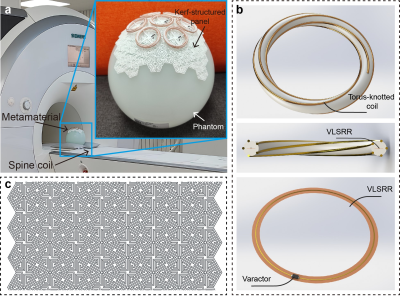 |
Computer Number: 114
3297. Quadric
Conformal Metamaterials with Torus-Knotted Coils and
Kerf-Structured Panels for Magnetic Resonance Imaging
B. Li, E. Zhou, Z. Mei, R. Xie, C. Liang, Z. You, H. Guo, X.
Zhao
Tsinghua University, Beijing, China
Impact: The
proposed metamaterial achieves 9-fold SNR enhancement and is
suitable for applications in joint and head MRI. These
findings suggest possibilities for wearable metamaterials
adaptable to various human body surfaces by incorporating
further stiffness control.
|
|
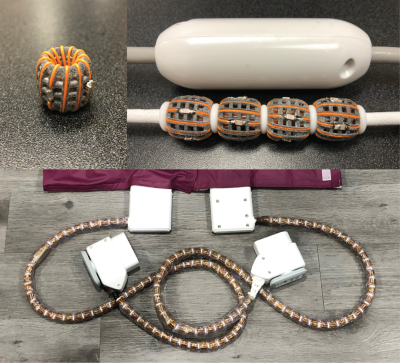 |
Computer Number: 115
3298. Compact,
Elliptical-Toroid Floating Cable Traps
J. Vincent, V. Taracila, D. Anderson, R. Stormont, F. Robb
GE HealthCare, Aurora, United States
Impact: Our design demonstrates the possibility of
lighter-weight cable traps that reduce heating and field
distortion, minimize coupling with the coil and adjacent
cable traps, and could improve safety through further
minimizing the risk of RF burns on patients.
|
|
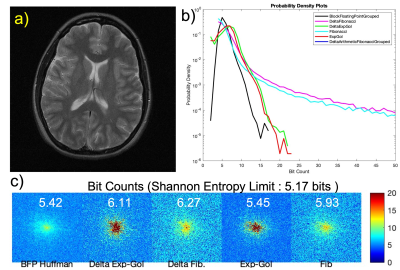 |
Computer Number: 116
3299. Simple
Universal Codes: Lossless Compression for Lower MRI Data
Transmission Rates
T. Zhang, F. Robb, S. Vasanawala, J. Pauly, G. Scott
Stanford University, Stanford, United States
Impact: MRI k-space data appears compressible by 3x
before data transmission. This means band-limited wireless
coil arrays (WiFi or ultra-wideband) could support image 3x
higher throughput, or operate with significantly slower link
rates. This would be crucial for robust performance.
|
|
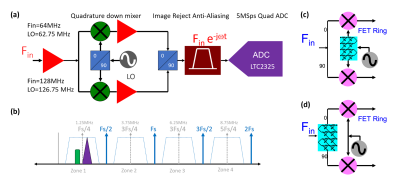 |
Computer Number: 117
3300. Techniques
in Low-IF, Low Power MRI Front Ends
A. Fontaine, F. Robb, S. Vasanawala, J. Pauly, G. Scott
Stanford University, Stanford, United States
Impact: If the front end electronics can be distributed
on the coil array, this opens the possibility of data
transmission with a wireless interface. The receive
topology could eliminate cable trap baluns, which inhibit
flexibility and wearability, compromising form factor.
|
|
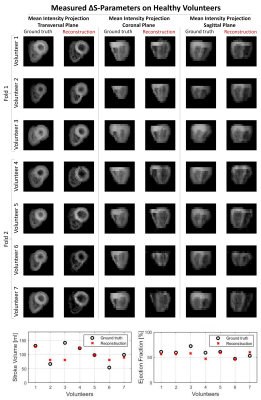 |
Computer Number: 118
3301. Imaging
Heart Motion Using Differential Scattering Parameters: An
AI-Based Approach
E. F. Meliado, V. Koloskov, C. A. van den Berg, B. R.
Steensma
University Medical Center Utrecht, Utrecht, Netherlands
Impact: RF-based imaging offers the potential for
patient friendly and accessible cardiac imaging, with
potential applications in continuous cardiovascular health
monitoring, including heart failure management.
|
|
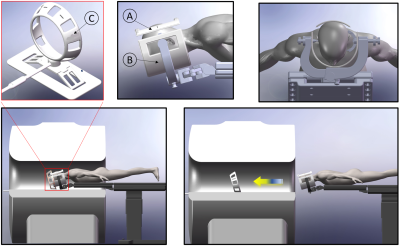 |
Computer Number: 119
3302. Splittable
wireless resonator array for intraoperative MRI
H. Zhu, C. Zhou, M. Lu, R. Wang, R. Li, Y. Chen, X. Yan
Sino Canada Health Institute Inc., Winnipeg, Canada
Impact: This design improves iMRI and MR-guided therapy
applications by providing a cost-effective, easy-to-use
solution that supports advanced imaging capabilities and
surgical requirements.
|
|
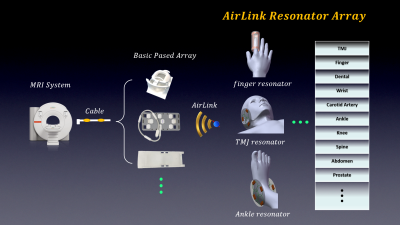 |
Computer Number: 120
3303. AirLink
Multi-Resonator Array
H. Zhu, F. Wang, Q. Zhang, Y. Chen, R. Li, X. Yan
Sino Canada Health Institute Inc., Winnipeg, Manitoba, Canada, Winnipeg, Canada
Impact: The approach of combining wireless resonators
with a conventional array significantly simplifies MRI coil
design, improves image SNR, reduces costs, and ensures
compatibility for parallel imaging across all major
platforms and field strengths.
|
|
 |
Computer Number: 121
3304. Wireless
Integrated Sensing Detector for simultaneous EEG and MRI
(WISDEM)
C. Qian, Y. Chen, X. Yu
Michigan State University, East Lansing, United States
Impact: This 2-in-1 transducer will enable cross-scale
brain mapping.
|
|
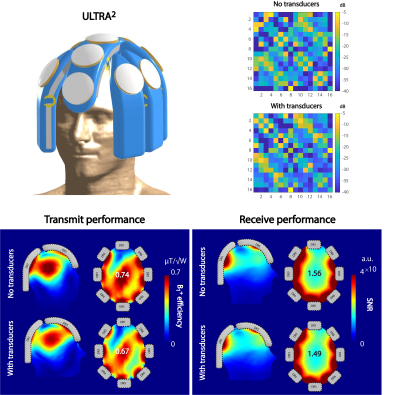 |
Computer Number: 122
3305. ULTRA2:
a novel system for multi-focal, low-intensity focused ultrasound
neuromodulation and whole-brain, ultra-high field MRI at 7T

D. Wenz, L. Tiston, J. Philippe, K. Pierzchala, R.
Salomir
CIBM Center for Biomedical Imaging, Lausanne, Switzerland
Impact: ULTRA2 will
enable multi-focal, high-precision LIFU neuromodulation
guided using advanced UHF neuroimaging strategies, thereby
adding a new dimension to developing non-invasive treatment
strategies for neurological and neuropsychiatric diseases.
|
|
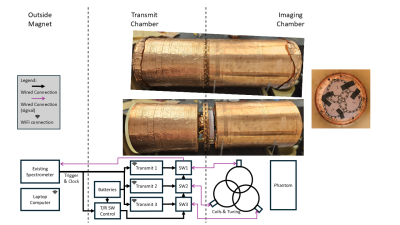 |
Computer Number: 123
3306. Three-Channel
Modular Transmit Array for RF Gradient MRI: Enabling Low-Cost,
Scalable RF Arrays Through Active Decoupling
N. Bolding, C. Vaughn, A. Patel, S. Lin, J. Sun, W. Grissom,
M. Griswold
Case Western Reserve University, Cleveland, United States
Impact: Enabling high RF transmit channel count is
essential for RF encoded imaging techniques like Selective
Excitation through Nutation and Fingerprinting (SENF). Novel
transmit system architecture presented here enables a
reduction in system cost and easier array scaling while
increasing portability.
|
|
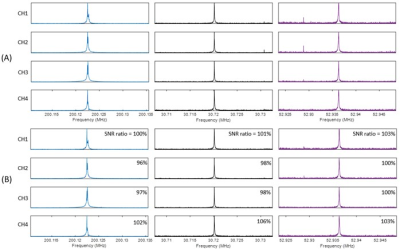 |
Computer Number: 124
3307. An
Add-on System for Enabling Simultaneous/Interleaved Multinuclear
MRI/MRS Experiments
J. Hou, C. Bauer, M. McDougall, S. Wright
Texas A&M University, College Station, United States
Impact: We propose a cost-effective, phase-stable
solution to enable a traditional scanner with
simultaneous/interleaved multinuclear capability. This
approach eliminates the need for retrospective phase
correction, enabling the user to directly view/process the
acquired multinuclear data on the console.
|
|
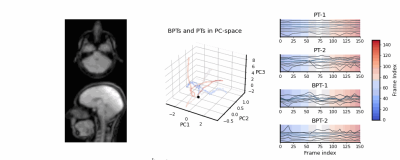 |
Computer Number: 125
3308. Implementation
and characterization of MIMO RF navigators towards robust
TR-by-TR head motion sensing

P. Krahn, S. Anand, M. Lustig
University of California, Berkeley, Berkeley, United States
Impact: We present and characterize the first system for
multiple-input multiple-output (MIMO) RF motion sensing with
BPT and PT, aimed toward head motion sensing and correction
at arbitrary frequencies, and simultaneous to the MRI exam.
|
|
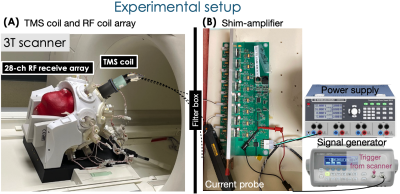 |
Computer Number: 126
3309. Spatially-selective
excitation using tailored B-fields generated by a TMS coil for
causal brain mapping applications
B. Bilgic, Y. Ma, L. Navarro de Lara, M. Daneshzand, S.
Huang, A. Nummenmaa, J. Stockmann
Martinos Center for Biomedical Imaging, Charlestown, United States
Impact: TMS coils can be utilized to reduce the field of
view by exciting the part of the brain targeted only. This
may offer improved capabilities for mapping of the
TMS-induced brain activation more accurately.
|
|
 |
Computer Number: 127
3310. Towards
Accurate and Automated TMS Coil Placement with a Robotic System
in MRI: A preliminary study
A. De Goyeneche, N. Zhao, C. Paxson, B. He, R. Fearing, S.
Yu, C. Liu, M. Lustig
UC Berkeley, Berkeley, United States
Impact: This system demonstrates capacity for precise,
automated TMS coil positioning within the MRI, laying a
foundation for fully integrated TMS-MRI setups. This
approach will facilitate patient-specific, adaptive
stimulation, enabling studies on dynamic brain-state-driven
stimulation and improving clinical reproducibility.
|
|
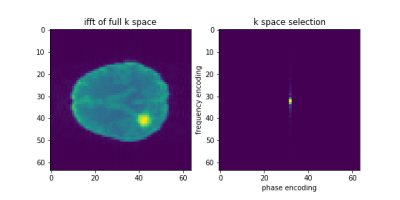 |
Computer Number: 128
3311. Metamaterial-aided
reconstruction of under-sampled k-spaces
I. Lee, D. Hoinkiss, J. Huber, D. Philipp, J. Müller, M.
Günther
University of Bremen, Bremen, Germany
Impact: Reducing acquisition time improves patient
comfort and reduces motion artifacts. To achieve further
acceleration, however, the frequency encoding should be
under-sampled. While the method presented in this abstract
can theoretically accomplish this, new configurations of
metamaterials must be investigated.
|
The International Society for Magnetic Resonance in Medicine is accredited by the Accreditation Council for Continuing Medical Education to provide continuing medical education for physicians.